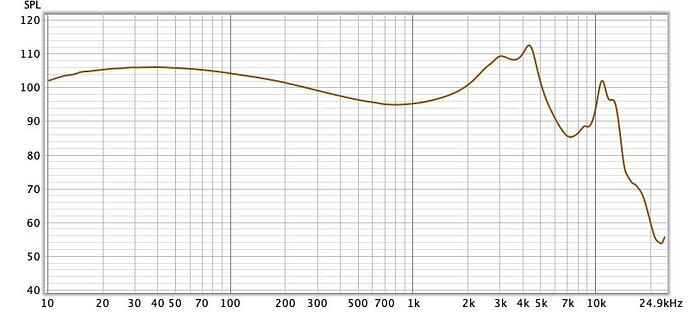GS Audio ST8B and GT12X or The Last Stand For All-BA IEMs…No Pressure Though
Thanks to another @RattlingBlanketWoman special, I got the opportunity to hear a couple of sets from what was a fabled company to me: GS Audio. I’ve heard a lot about this company, through reviews done by Akros, amongst other places, and so it is a treat to get an opportunity to try out the ST8B and GT12X. The ST8 is in their line of high-performance all-BA IEMs while the GT12 is in their cost-effective line of all-BA IEMs. We’re going to answer the question of whether or not you’re getting more for your money, and if BA sets are redeemable to me, without spending gobs of money, so let’s get to it.
Songs to Listen to and Follow Along:
As usual, I’m going to write my thoughts in generalities, but I’ll give you a sample of songs that I listen to, that will relate to the concepts I write about. Feel free to ask for specifics, if you don’t keep up with my thought processes.
Playlist
Swashers/Bubbles - Yosi Horikawa (For imaging/detail retrieval (:00-1:00 Swashers), general technicalities check (both), soundstage depth/dynamics/layering/separation (:00-:30 Bubbles))
The Speedwalker (Live at Madison Square Garden) - The Fearless Flyers (For bass elements, particularly sub-bass/mid-bass interplay, drum kits, soundstage/layering)
DISINTER MY HEART - TRAILS (For treble response and resolution, male vocals, midrange response)
When I Fall (Outta Love) - Kevin Olusola (For Imaging/detail retrieval :00-:07, tonality, timbre, male/female vocal interplay)
Fundamental Elements of Madness - Dax Johnson (For soundstage width 1:10-1:26, piano tonality)
Holding On (Rome In Silver Remix) - Dabin (For female vocals, tonality, mid-bass response within mix From 1:12-1:36)
THE SOUND
You’re at the wrong place, you’re on the back page; You’re in the getaway car
Placebo - You Don’t Care About Us
(IEM Tuning Style: Midcentric For Both)
In terms of the ST8, it does alright in the bass region because it doesn’t really try to mimic or compete with DDs and how they reproduce bass. ST8 doesn’t have a satisfying sub-bass rumble but it puts its efforts into producing a solid midbass pop. That emphasis is a plus to me. By contrast, the GT12 has a more balanced bass; it plays like it has a little more sub-bass and has a little looser bass than ST8. It isn’t done to DD levels but it doesn’t completely throw me off with the too-fast decay feeling I’ve gotten from other sets. Overall both sets have okay bass, not great or standout, but it’s not a deterrent. I think that’s good enough.
GT12 has a weightier midrange, with better note-weight to my taste. I found ST8 to be a touch cleaner, which will be a preference to many out there, so they clearly trade blows depending on what you’re looking for. Neither has an advantage or great difference in the vocals and upper-midrange; both do a solid job of putting things where they’re supposed to be, and avoid any kind of harshness by reducing the pinna gain and recessing the upper-midrange region. The next biggest divergence between the two comes in the treble. While they share the element of having relaxed, non-obtrusive treble, I found that the GT12 popped just a little bit more, where the ST8 could have moments of being too dark and veiled. GT12 strikes a better balance, to me.
In terms of soundstage, ST8 has the advantage: It has a decently wide stage but I took to the depth of the stage. It had a very good sense of space. GT12 was a bit more intimate and forward for me. If you want to feel like you’re right in front row of the performance, GT12 could get the nod instead. Where I do give GT12 a win is in technical performance: ST8 does an adequate job with imaging, separation and the like, considering the staging it has to work with. I think GT12 is in the same ballpark but it plays a little bit better considering it doesn’t have the soundstage to work with. I think both sets’ tuning left them lacking in dynamic range and the ability to make details pop, like the different weights and tones of bouncing balls in Bubbles.
THE GOOD
- Acceptable BA bass on both sets (G12 more balanced, ST8 more midbass focused)
- Price-to-Performance:
- For the configurations, you don’t find much available (Orchestra Lite aside)
- Good contrasts between the sets:
- G12 is a little cleaner, flowier sound. ST8 has a little more heft and thickness
THE BAD
- Neither set has a standout, defining feature
- They’re generally competent but neither set inspired me that much
- Price-to-Performance:
- For their prices, and having to go through Ali Express to get them, you can find plenty of options that require fewer hoops to jump through to get them
- ST8: Could’ve used better treble to pop technicalities; G12: Could’ve done with more low-end emphasis
WHO ARE THESE SETS FOR?
- Absolute beginners with no experience in all-BA sets
- These are an inoffensive introduction to how the configuration performs
- Someone who might watch classifieds listings and catches a sweet deal
- Anybody who understands their own preferences and knows if they want a warmer or cleaner replay
WHO ARE THESE SETS NOT FOR?
- Most people looking for the best bang for their buck
- Someone who wants sets that have something special or inspiring to them
- Someone who wants their purchases to be easy and straightforward
- Kiwi Ears Orchestra Lite is an safer, easier recommendation if you want to dip your toes into the all-BA world
WHAT DOES IT ALL MEAN?
What this means is that these GS Audio IEMs are fine…but they don’t do much more than fine. To pull a Perd Hapley: “These are IEMs, and they play music. That’s what they do.” I don’t think they’re bad and I don’t think they’re great. They kinda exist and if you have them, you can get by, but when you get the really good stuff you won’t really miss them at all. But they will do a job when you need them to. If I had to pick between the two, I’d probably lean towards the GT12, even though the ST8 has that bit more of body, I think the GT12’s better treble helps it play everything a little better. But in all honesty, I probably would stick to lower budgets to accomplish the goal of “just getting some music in”. Now I kinda feel like I need to give Orchestra Lite another shot…maybe at some point, but that’s for another day. And that’s going to be it for this review. Enjoy your days, and take care till next time!
Rank for GS Audio ST8B: B
Rank for GS Audio GT12X: B
Rank With Personal Bias For Both: B
Recommendation Level: ST8B: Not Recommended Relative to Other Options (Midcentric)
GT12X: Lukewarm Recommendation Relative to Other Options (Midcentric)
Rank As a Food: Vegan, Non-Dairy Cream Cheese




